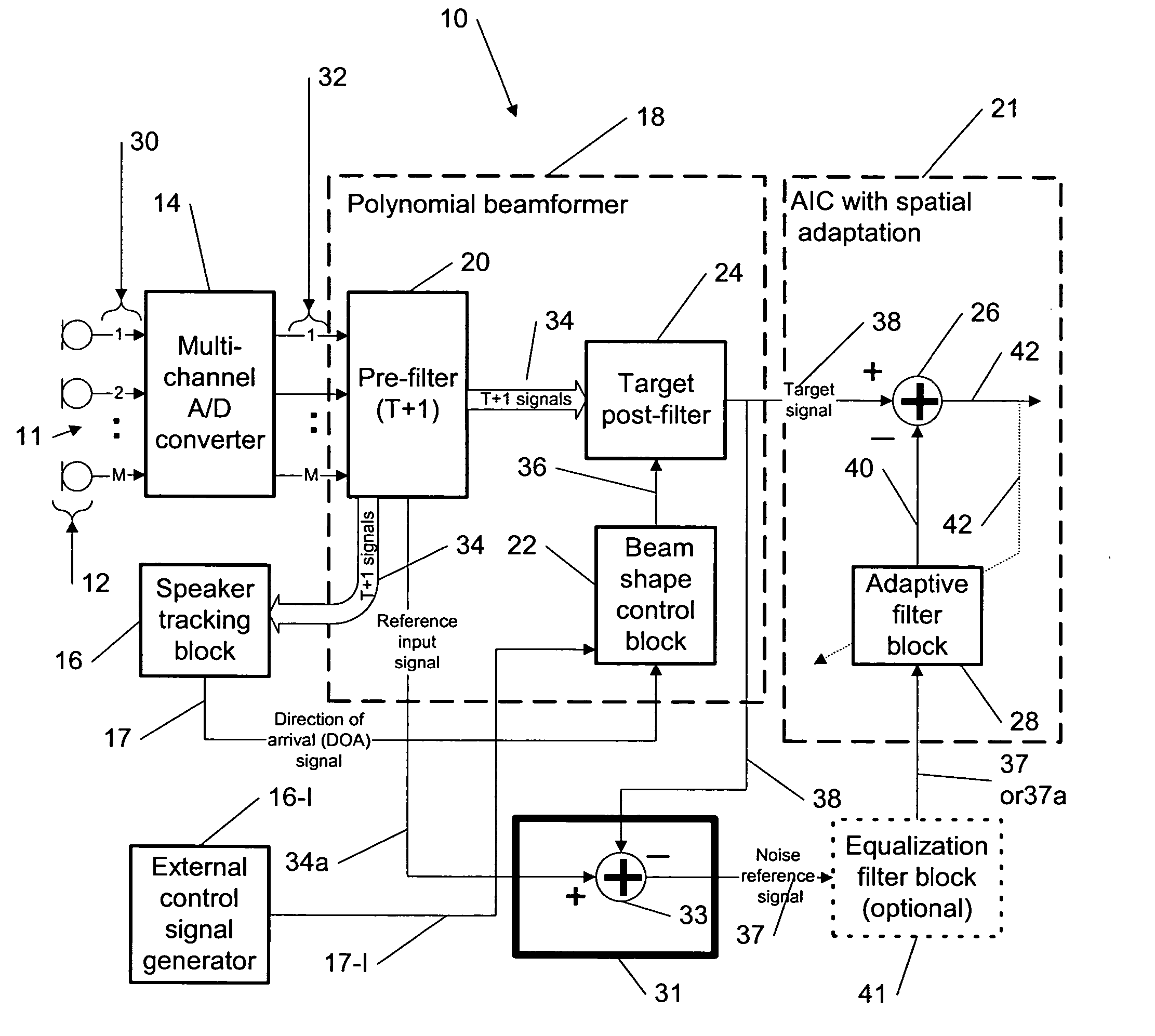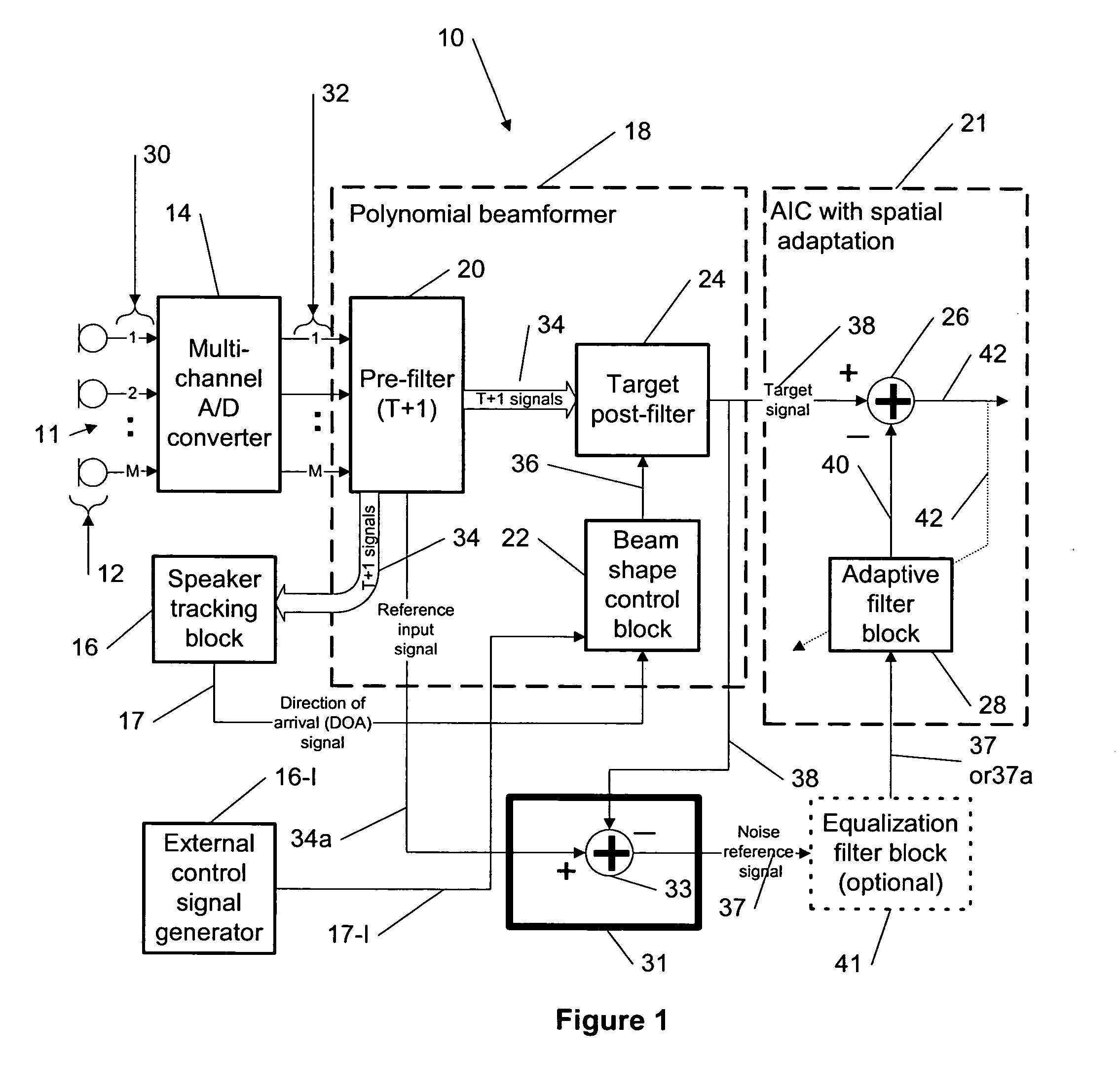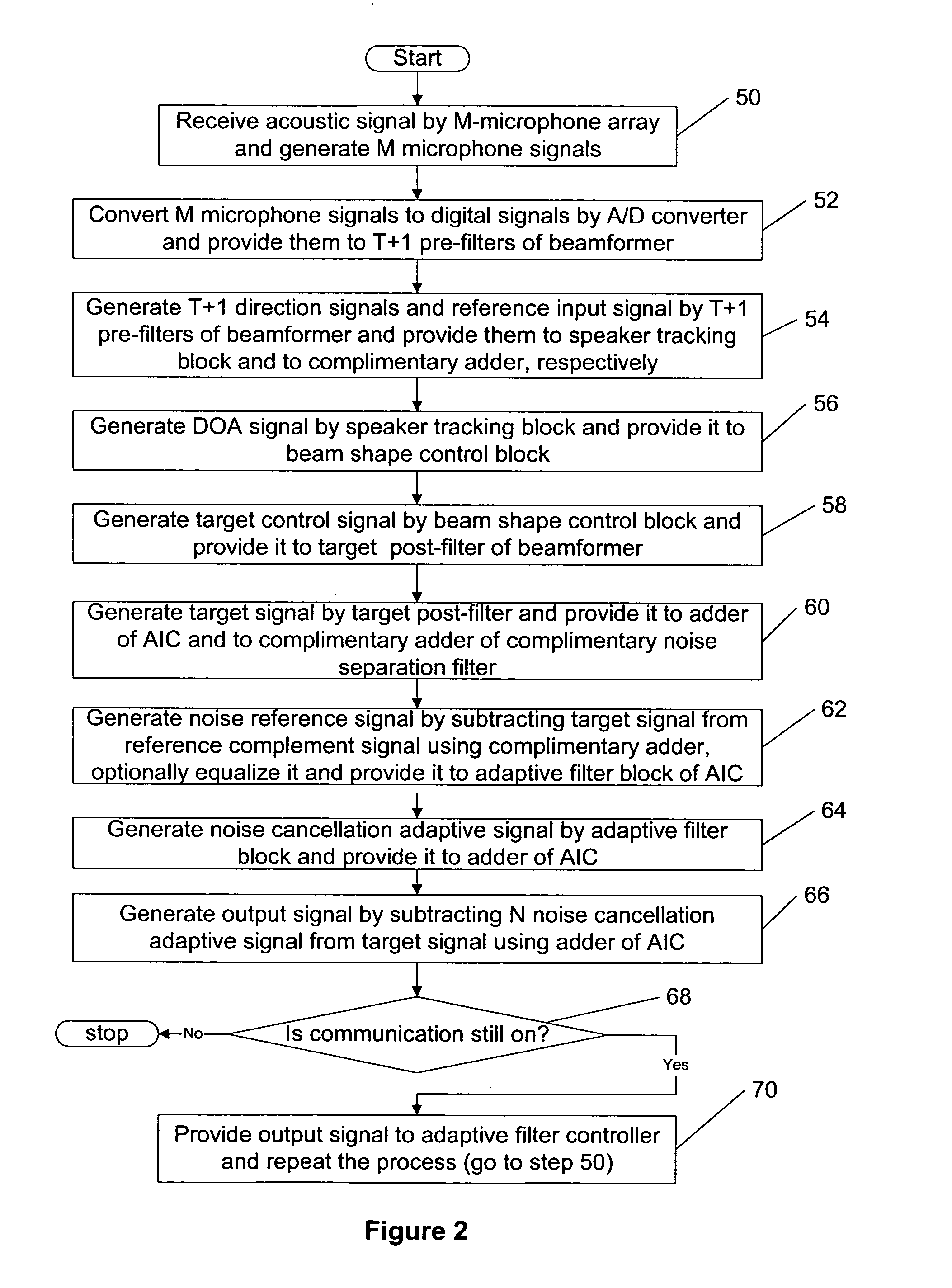Method for efficient beamforming using a complementary noise separation filter
a noise separation filter and beamforming technology, applied in direction finders, direction finders using ultrasonic/sonic/infrasonic waves, instruments, etc., can solve the same fundamental problems, increase manufacturing costs, and the number of microphones and arrays set a limit to their performance, so as to achieve the effect of not increasing the computational complexity of the algorithm
- Summary
- Abstract
- Description
- Claims
- Application Information
AI Technical Summary
Benefits of technology
Problems solved by technology
Method used
Image
Examples
Embodiment Construction
[0049] The present invention provides a novel method for efficient beamforming for generalized sidelobe canceling using complementary noise separation filtering for generating a noise reference for adaptation performance of an adaptive interference canceller (AIC). This invention illustrates an approach how the beamformer performance can be efficiently improved by efficient integration of a complementary filter and sum beamforming and adaptive processing. Like all beamformer systems this invention is targeted to extract the desired signal from the look (target) direction and try to attenuate the disturbing noise components.
[0050] According to the present invention, the adaptive filter provides noise estimates to be subtracted from the desired signal path providing further noise reduction in the system output. More specifically, the present invention relates to a multi-microphone beamforming system similar to a generalized sidelobe canceller (GSC) structure, but the difference to th...
PUM
 Login to View More
Login to View More Abstract
Description
Claims
Application Information
 Login to View More
Login to View More - R&D
- Intellectual Property
- Life Sciences
- Materials
- Tech Scout
- Unparalleled Data Quality
- Higher Quality Content
- 60% Fewer Hallucinations
Browse by: Latest US Patents, China's latest patents, Technical Efficacy Thesaurus, Application Domain, Technology Topic, Popular Technical Reports.
© 2025 PatSnap. All rights reserved.Legal|Privacy policy|Modern Slavery Act Transparency Statement|Sitemap|About US| Contact US: help@patsnap.com



